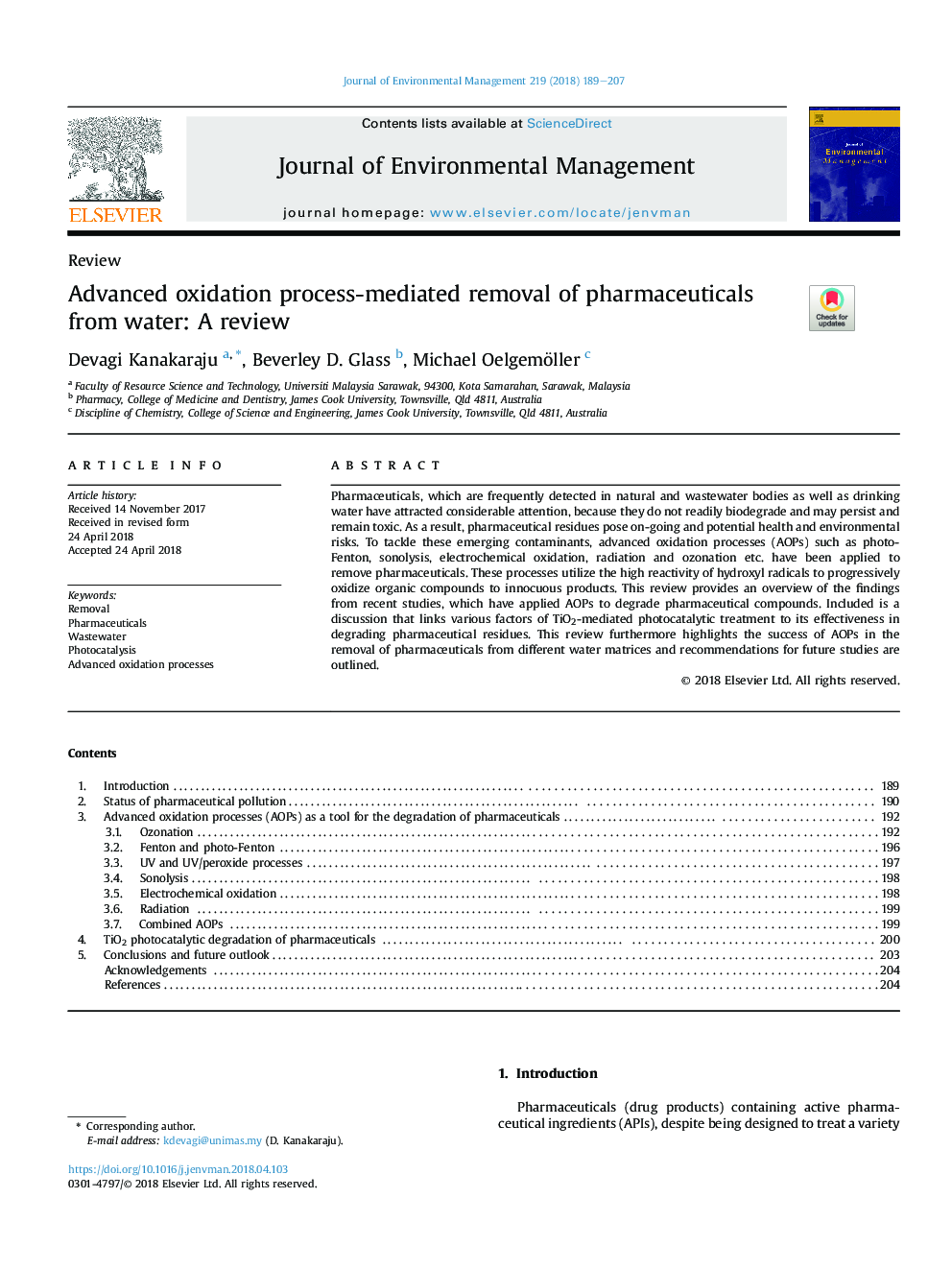| Article ID | Journal | Published Year | Pages | File Type |
|---|---|---|---|---|
| 7476679 | Journal of Environmental Management | 2018 | 19 Pages |
Abstract
Pharmaceuticals, which are frequently detected in natural and wastewater bodies as well as drinking water have attracted considerable attention, because they do not readily biodegrade and may persist and remain toxic. As a result, pharmaceutical residues pose on-going and potential health and environmental risks. To tackle these emerging contaminants, advanced oxidation processes (AOPs) such as photo-Fenton, sonolysis, electrochemical oxidation, radiation and ozonation etc. have been applied to remove pharmaceuticals. These processes utilize the high reactivity of hydroxyl radicals to progressively oxidize organic compounds to innocuous products. This review provides an overview of the findings from recent studies, which have applied AOPs to degrade pharmaceutical compounds. Included is a discussion that links various factors of TiO2-mediated photocatalytic treatment to its effectiveness in degrading pharmaceutical residues. This review furthermore highlights the success of AOPs in the removal of pharmaceuticals from different water matrices and recommendations for future studies are outlined.
Related Topics
Physical Sciences and Engineering
Energy
Renewable Energy, Sustainability and the Environment
Authors
Devagi Kanakaraju, Beverley D. Glass, Michael Oelgemöller,
